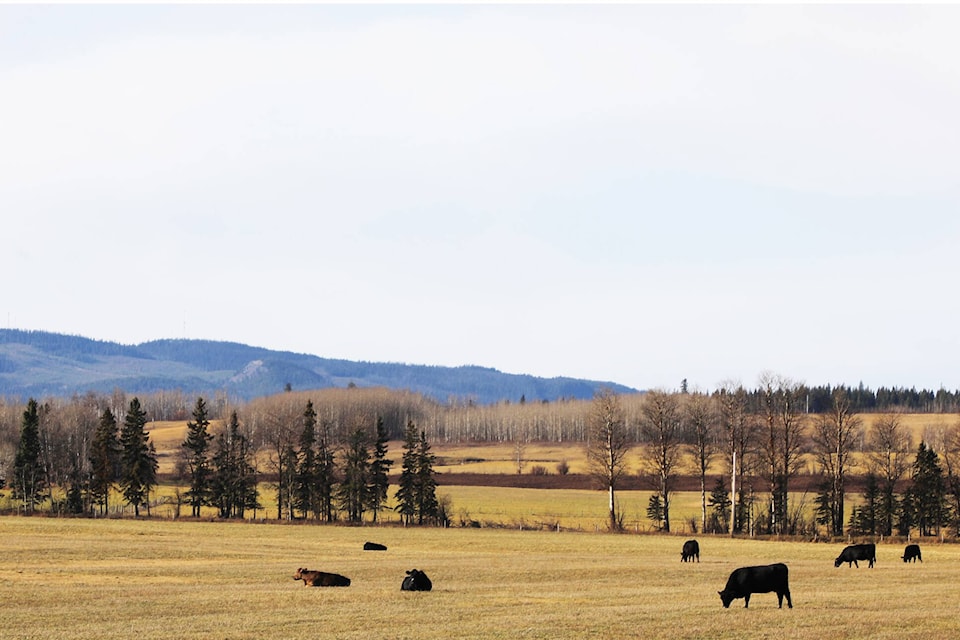The Nechako Valley agricultural community is hopeful for a turnaround this season as farmers face record-high fertilizer and seed prices into the spring after reduced grain yields in 2021.
Alex Kulchar has been raising beef cattle and forage crops in the area for 34 years and gave an update on how things are going heading into 2022.
As a member of the Nechako Valley Regional Cattlemen’s Association Kulchar is also a regional representative on the board of directors of the B.C. Cattlemen’s Association.
“Agricultural activity surrounds us in the Nechako Valley, we see it if we drive in any direction,” Kulchar said, but he added that what you see from the road does not give the full picture.
“Just because you drive past it every day doesn’t mean you kind of know what’s going on. You’ve got to talk to the people… If given the opportunity, talk to a local farmer and listen to what they are willing to share.”
READ MORE: Bailey’s celebrating 100 years of farming in B.C.
Forage production, primarily alfalfa, is the main farming enterprise in the area. Beef cattle along with some sheep, goats and a local dairy operation use a lot of the feed. Much of that is also shipped out of the area in large bales and in the form of compressed hay from the two local hay presses. Feed grain is grown for both local use and shipment out of the area.
He said the 2021 crop year started out with adequate moisture. Most grain crops were seeded and began growing in a promising manner. Hay and pasture crops also got off to a good start.
The heat dome that hovered over Western Canada at the end of June and beginning of July at first produced some good quality hay.
But the extreme heat affected the grain crops — barley in particular. Kulchar said many of the earlier seeded crops were at a vulnerable stage as they were just starting to head out when the extreme heat occurred.
This seriously reduced the grain yields of these crops and the amount of straw produced. When harvest time rolled around Kulchar said “damp, though not particularly wet” weather made combining a slow process.
Livestock feed has been in short supply —hitting record prices amid widespread drought in western North America last year.
This coupled with forest fires in southern B.C. then flooding in the Fraser Valley and Southern Interior has made any extra feed — not already sold or set aside for livestock — a sought-after commodity in Nechako.
“The price of both grain and hay is something we’ve never seen before. The cost of feed, if you can find it, is at record high levels here,” Kulchar said.
“Alberta was pretty dry, too. Typically a lot of hay flows down from the Bulkley Valley and then into southern B.C. every year but this year was even worse because they were really dry.”
VIDEO: Woman captures aerial footage of flood devastation in Abbotsford
Following the devastating floods in November last year affecting cattle producers in the Merritt area, several cattlemen from the Nechako Valley responded by donating three truckloads of large round bales to those in need.
He said trucking of the much-needed donated hay to producers was done quickly with the coordination of an emergency feed program administered by the B.C. Cattlemen’s Association.
Producers from the Lakes District also responded to the emergency with donations of hay.
Kulchar said a lot of gratitude has been expressed at provincial cattlemen’s meetings for those donations. Not just for the hay but also for the moral support during tough times.
“In the big picture it was more of a morale boost to some of the guys who fought fire all summer and then had to face this flooding event in November,” Kulchar said.
“It was just good for them to know that somebody is thinking about them at least.”
The hub of commerce for the cattle industry in the Nechako Valley is the B.C. Livestock Producers Co-op saleyard in Vanderhoof.
Cattle from the surrounding Lakes District and Bulkley Valley are sold there alongside cattle from the Prince George area and some from the Robson Valley.
Mike Pritchard who manages the Vanderhoof yard gave a rundown of some numbers from 2021. Pritchard reported 18,979 head of cattle and calves were sold through the stockyard from July 1 to Dec. 31, 2021, at a value of more than $19 million.
Good feed supplies in the Highway 16 corridor meant some feeder cattle were retained into the new year.
Calves under 10 months of age account for the majority of animals at the local sale ring. Since 2017, prices for feeder calves have declined slightly every year. This trend continued into 2021, with average calf prices slightly lower than the year before.
Steer calf prices last year were also slightly higher than the year before but heifer calves were lower by nearly 10 cents per pound, causing the overall average to be lower. Yearling feeder prices were comparable to the previous year.
Slaughter cow and bull prices last fall were generally lower due to the drought forcing more breeding cattle to market.
All things considered Kulchar said the community remains hopeful despite a difficult year in 2021.
“As ever, with the spring of the year coming and with new life coming there is optimism for a new season.”
READ MORE: Province revises ALR regulations to make room for vertical farming
Do you have a comment about this story? email:
michael.bramadat-willcock@ominecaexpress.com
Like us on Facebook
